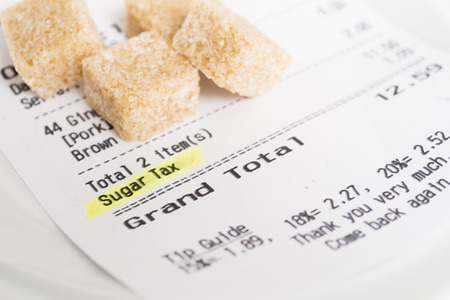Application Exercise 5m: Britain’s sugar tax

- The sugar tax is designed to discourage the consumption of high sugar fizzy drinks by raising the effective costs of production for producers, which in turn increases the price of these drinks. Given that most consumers are price conscious (i.e. they will tend to consume less when the price of a product increases), the higher price fizzy drinks will reduce the demand for and consumption of these drinks.
- While it is indeed true that a higher price is likely to reduce the consumption for products, including fizzy drinks, is also true that the consumption might not fall by significant degree. This is largely due to the fact that sugary drinks tend to be addictive for many consumers which results in consumers becoming less responsive to higher prices. [In economics, this is related to a concept known as the price elasticity of demand, which refers to the responsiveness of demand to a change in the price of a product.] The addictive nature of sugar is a reason why manufacturers of food products more generally tend to include a relatively high quantity of sugar in the production of the goods. This fact, combined with clever marketing/advertising (such as a TV commercial featuring fit and healthy teenagers having fun on a beach while enjoying a Coca-Cola), enables manufacturers to effectively manipulate consumers into buying greater quantities of their products. Accordingly, a sugar tax alone is unlikely to lead to a significant reduction in the production of sugary drinks. It will necessarily involve other actions (see responses to question 3 below) in order to be effective at reducing the consumption of sugary drinks and therefore improving health outcomes.
- A tax on the sugar has the potential to raise a significant amount of revenue for the government (just like the excise duties that currently apply to alcohol, tobacco and fuel. This is because consumers are relatively unresponsive to price rises of these products. This results in production and consumption levels falling by a smaller percentage compared to the percentage rise in price and therefore results in the government receiving lots of revenue. The government should use the revenue in ways that further reduce the demand for sugary drinks. This might involve providing subsidies to consumers or producers of healthy foods in addition to spending on advertising that encourages healthy eating and discourages unhealthy choices. This could include the government ‘nudging’ consumers into making better choices similar to the US government’s attempts to reduce obesity through the use of the children’s television program Sesame Street (where the characters were shown making healthy food choices).
- Australia is one of many countries considered to be facing an obesity epidemic that is related to unhealthy food choices (such as excessive consumption of sugary drinks). Obesity affects not only those people directly experiencing obesity, but also society more generally, in terms of the potential for lost productivity as well as the burden to the health system. In this respect, the consumption of sugary drinks and the related obesity epidemic can be likened to smoking given that both are examples of goods (or ‘bads’) that are not only bad for consumers (i.e. demerit goods), but goods that impose negative externalities in consumption. In other words, the consumption of these products is bad not only for those consuming them, but also for 3rd parties or society more generally. It is in this respect that obesity can be described as the new smoking.
